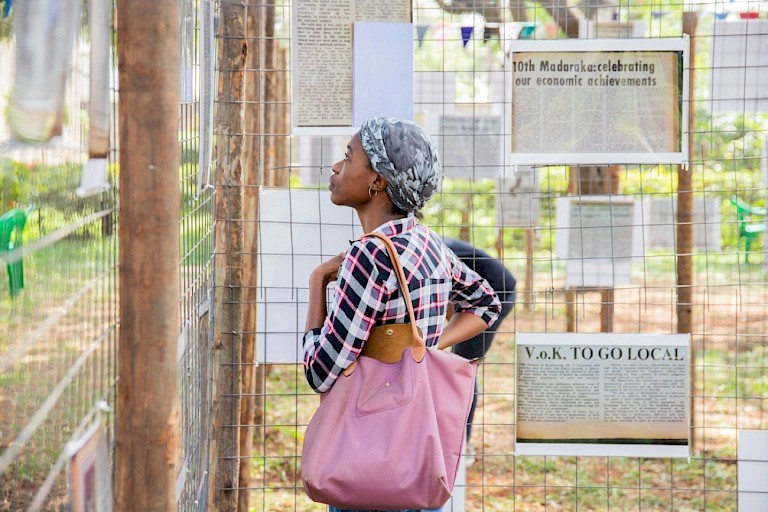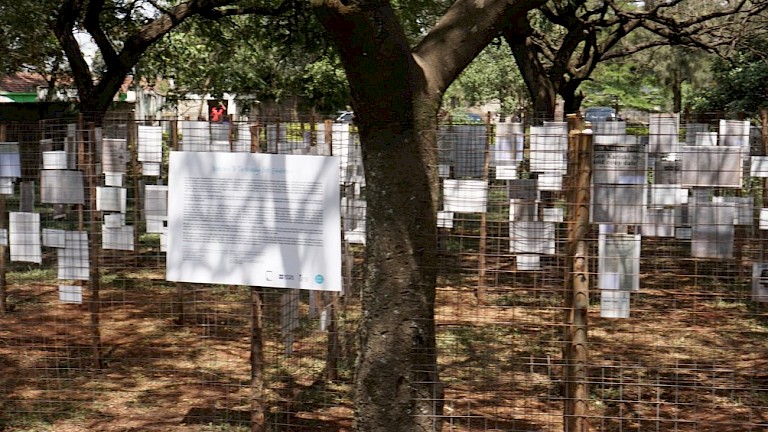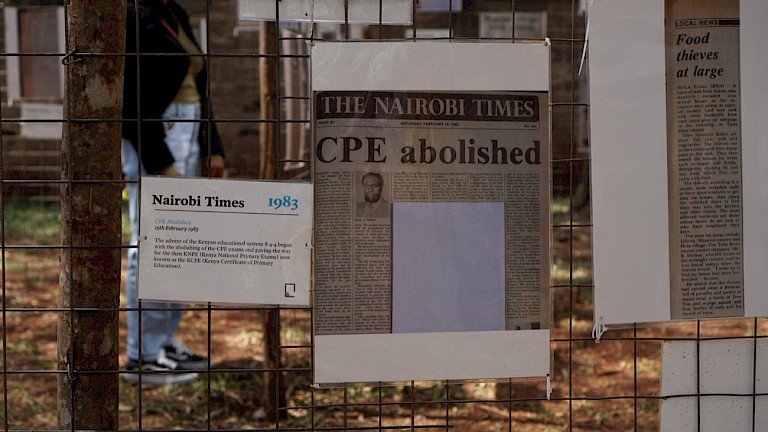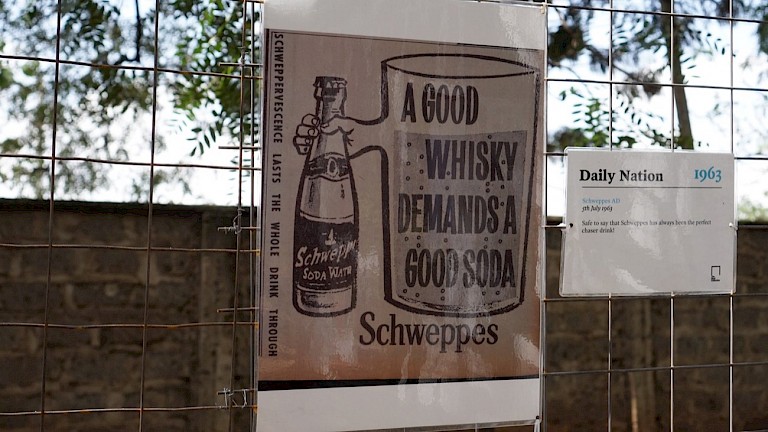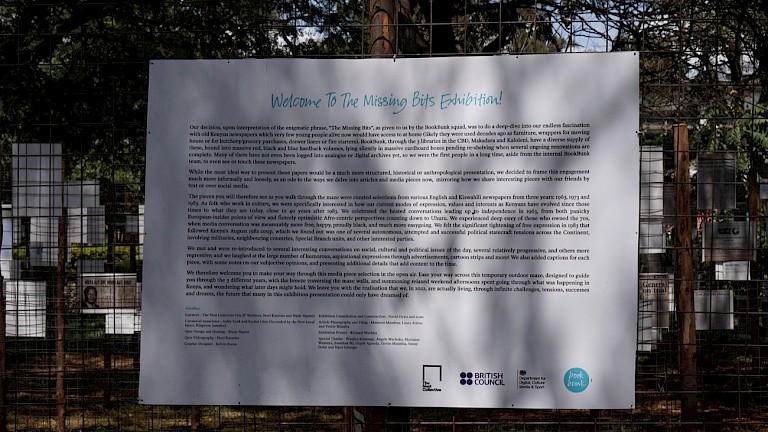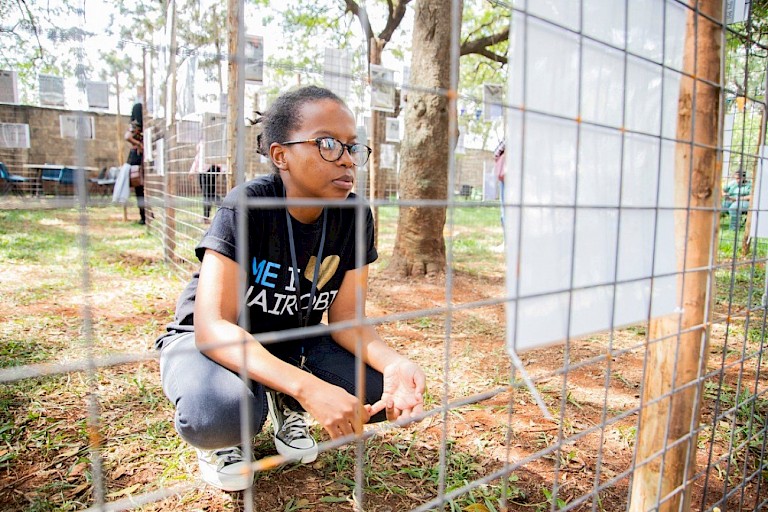



Apparently The Missing Bits idea came from the Book Bunk group who claims this by saying that while digitising the books in one of the Libraries they were revamping, they “noticed that the collection, while important, is incomplete. There are many facets of Kenyan daily life we do not see in this archive. While these collections speak to key historical moments in our recorded history, they would benefit from more material capturing public memories from various times.”
For them, this was the birth of an archival project named The Missing Bits: This project has many parts and is a multi-dimensional archival offering which includes the digitsing of public and personal archives, panel discussions, film screenings and the exhibition. The Missing Bits project is a continuum and has a 10 years timeline including the Time Capsule bit.
The Missing Bits is an installed exhibition had other components including sharing brief curatorial thoughts about what was interesting for the curators in the chosen pieces as they thought about the bridges between the past, the present and the future of not just Nairobi, Africa but the entire world, although from their Kenyan perspective. To even make it more appealing and engaging for the audience during the opening they added an additional exciting perk and featured storyteller, performer who devised and developed a series of fun questions for the exhibition attendees that day, loosely based on the maze content and related ideas. They also included exciting prizes. All these gave more life to the framed contents taken from the library to reflect the life and times of Kenyan people within a space of 20 to 30 years. The installed exhibition is mostly made up of Newspapers from the Library archives (1963, 1973, 1983), installed in public space. This facilitated a reflection on communication forms, style and issues the country faced in those years and the connection to the present day.
The Missing Bits Project is in extension supported by the British Council’s Cultural Protection Fund, in partnership with the Department for Digital, Culture, Media and Sport, who supports projects that protect cultural heritage at risk due to conflict or climate change, mainly in the Middle East and parts of North and East Africa. More information on the Cultural Protection Fund is available here.
The excellence of the exhibition stems from the fact that it is innovative and inclusive. Curated art as we know it, is a colonial culture, bringing this content to the public gave it the African flare, a festival of some sort. In the African context, culture is in the public domain, accessible, inclusive and with no bias to status. In Africa events are social, everyone is invited, not just the elite, scholars or art collectors.
The Missing Bits collaborative initiative cut across culture practitioners Library/Art/Curator etc making it inclusive. The Nest Collective is known to offer interactive and well researched programmes, activities and events, that offer a wider range of opportunities for participants.
The exhibition was set up in the form of a minimalist temporary maze, constructed outdoors in the library’s green lawn. This naturally allowed everyday and ordinary people passing by the streets access to the installation. Visitors to the show could move up and down through the installation. Utilising nature in an interesting manner, the exhibits were covered by tree shade making it possible for visitors to relax in an oxygen (released by the trees) filled environment, to take their time to read and view the many materials from the archive which were on display. These articles included advertisements, cartoons and news articles among others, purposely curated to enhance view/audience experience and engagement.
An overarching purpose of the project is to interrogate how those covered in the news are usually the extremely unfortunate (deaths, accidents, etc), or the extremely fortunate (societally judged brilliant, powerful, rich or beautiful). Meanwhile, in between the two extremes, there are many; multitudes of people whose existence never gets recorded by news and newspapers. One way society continues to foster a divide: The VIPs and the LIPs.
The whole process and installation lends itself as a teaching resource for art, culture and humanities.
